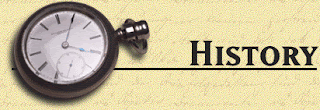Q.1. – Consider the following statements:
1. The discussion in the third round table conference eventually led to the passing of of the Government of India act of 1935.
2. The Government of India act of 1935 provided for the establishment of an all India Federation to be based on a union of the provinces of British India and the Princely States
Which of the statements given above are correct ?
(A) Only 1
(B) Only 2
(C) Both 1 and 2
(D) Neither 1 nor 2
Ans. C
Q.2. With whose permission did the English set-up their third first factory in Surat ?
(A) Akbar
(B) Shahjahan
(C) Aurangzeb
(D) Jahangir
Ans. D
Q.3. Mahamastak abhisheka, a great religious event, is associated with and done for which of the following ?
(A) Buddha
(B) Bahubali
(C) Nataraja
(D) Mahaviraji
Ans. B
Q.4. Which of the following Prime Ministers sent Cripps Mission to India ?
(A) James Ramsay MacDonald
(B) Winston Churchil
(C) Stanley Baldwin
(D) Neville Chamberlain
Ans. B
Q.5. Who founded the Ahmedabad Textile Labour Association ?
(A) JB Kripalani
(B) NM Joshi
(C) Sardar Ballabhbhai Patel
(D) None of These
Ans. D
Q.6. Consider the following statements:
The Cripps mission proposal include the provision for
1. Full independence for India
2. Creation of constitution making body.
Which of the statements given above are correct:
(A) Only 1 (B) Only 2
(C) Bothe 1 and 2 (D) Neither 1 nor 2
Ans. B
Q.7. Who among the following rejected the title of ‘Knighthood’ and refused to accept a position in the Council of the Secretary of State for India ?
(A) Motilal Nehru (B) MG Ranade
(C) GK Gokhale (D) BG Tilak
Ans. C
Q.8. Assertion (A) The congress Ministries in all the provinces resigned in the year 1939.
Reason (R) The congress did not accept the decision of the Viceroy to declare war against Germany in the context of the 2nd World war.
(A) A and R are individually true and R is the correct explanation of A .
(B) A and R are individually true but R is the not correct explanation of A.
(C) A is true, but R is false.
(D) A is false, but R is true.
Ans. A
Q.9. Who was the Viceroy of India when the Rowlett Act was passed ?
(A) Lord Irwin (B) Lord Ripon
(C) Lord Chelmsford (D) Lord Wavel
Ans. C
Q.10. Who among the following ruler was known as “Kramaditya”?
A. Chandragupt First
B. Chandragupt Second
C. Kumargupta First
D. Skandgupta
Ans. D




